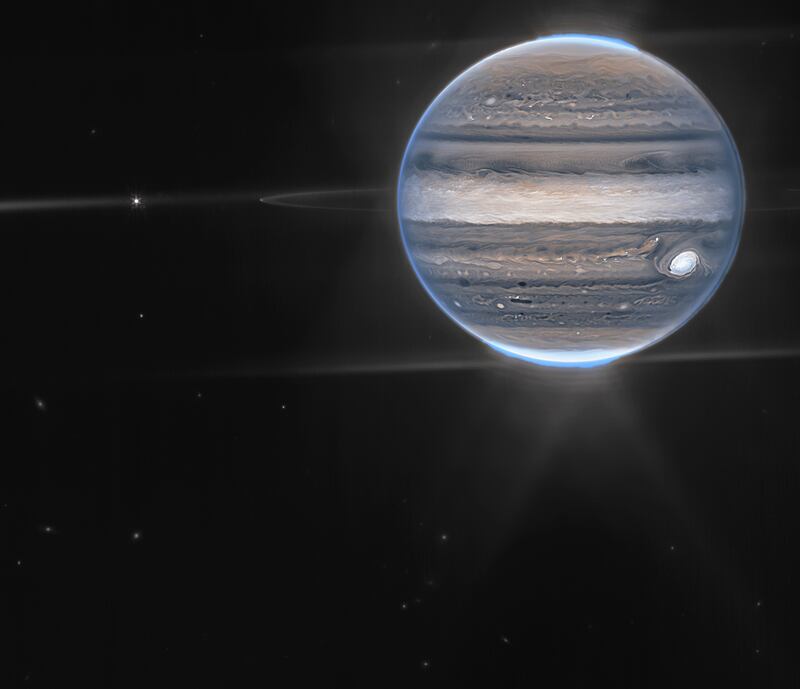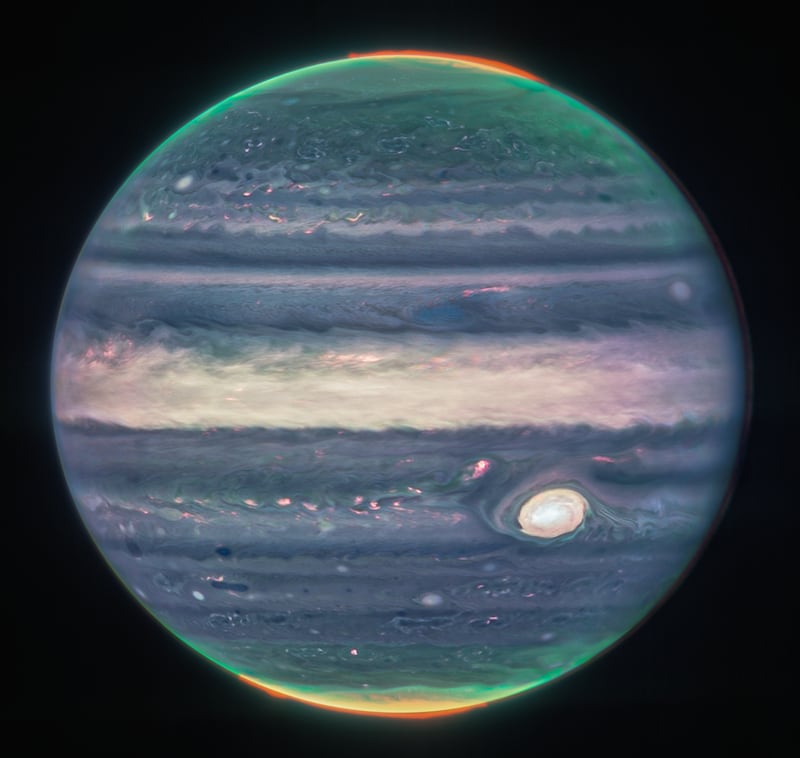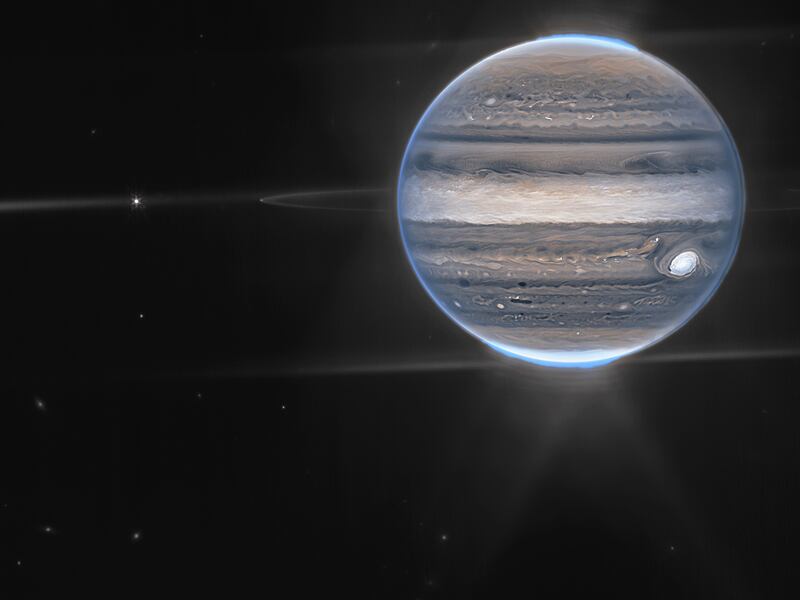The James Webb Space Telescope continues to amaze.
“Stunning,” “incredible,” a “dreamlike jewel” — and better than expected — are some of the reactions to the latest images from the $10 billion telescope, which captured detailed views of Jupiter’s climate and auroras.
“We’ve never seen Jupiter like this. It’s all quite incredible,” said Imke de Pater, a planetary astronomer and professor emerita at the University of California, Berkeley, in a statement. “We hadn’t really expected it to be this good, to be honest.”
What did the James Webb Space Telescope capture?

The images from Jupiter show:
- Light displays and haze: Bright auroras at the southern and northern poles of the planet, and “hazes swirling around” those poles, according to NASA.
- Storms and clouds: A white image of the Great Red Spot — “a famous storm so big it could swallow Earth,” according to NASA — which “indicates high altitude,” according to Heidi Hammel, a Webb interdisciplinary scientist. “The numerous bright white ‘spots’ and ‘streaks’ are likely very high-altitude cloud tops of condensed convective storms.”
- Rings and ‘photobombing’ galaxies: A wide-field view of the planet shows what NASA describes as Jupiter’s “faint rings, which are a million times fainter than the planet, and two tiny moons called Amalthea and Adrastea. The fuzzy spots in the lower background are likely galaxies ‘photobombing’ this Jovian view.”
“It’s really remarkable that we can see details on Jupiter together with its rings, tiny satellites, and even galaxies in one image,” de Pater said.

What and where is Webb?
Beginning in July, NASA has released images of our deepest-ever view of the cosmos, interacting galaxies and a cartwheel galaxy.
- NASA’s James Webb tracker shows the telescope’s progress from launch in December to the release of the first images in July. The steps have included deployment, cooldown and instrument commissioning.
- The James Webb Space Telescope is the more advanced and capable successor to the Hubble Telescope, which is still in operation.


